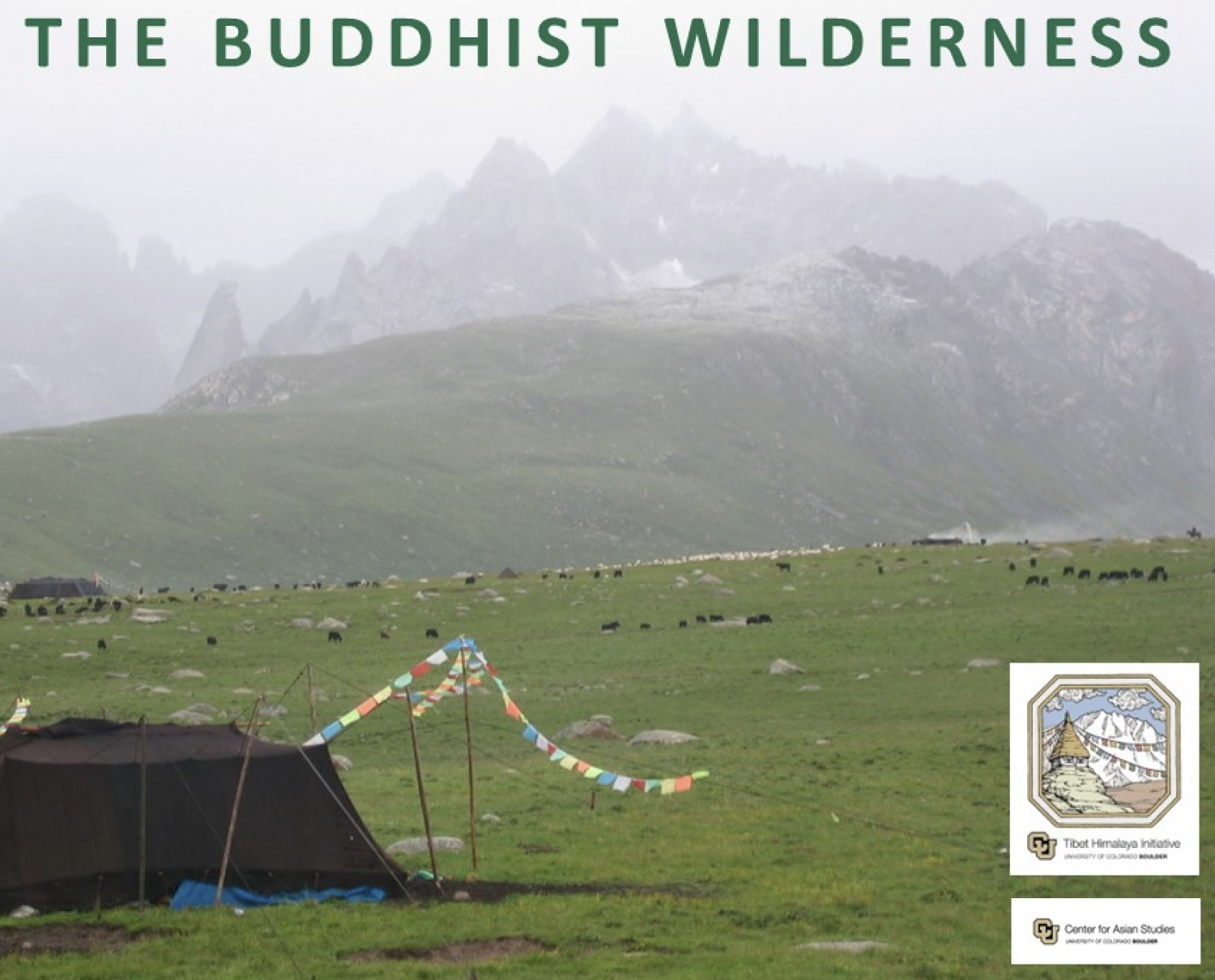Wilderness in Tibetan Buddhism 2023.04.13

Thursday, April 13, Reception 5:30, Lecture 6pm, followed by Q&A
Humanities 250
with Kurtis Schaeffer
The idea of wilderness, a natural environment largely unmarked by human settlement, has long been central to Buddhism. Wilderness is a space where spiritual development begins, flourishes, and achieves fulfillment. The Buddha began his quest by leaving the city and immersing himself in the wild. Throughout the millennia, Buddhist writers have promoted the benefits of living in the wilderness for working with body, mind, and emotion. And contemplatives in Tibet and the Himalayas seek to spend their latter years enjoying the serenity of solitude in nature.
Wilderness is one of the spaces where Buddhism takes place. As both an imagined and a physical environment, it is a fundamental means by which Buddhists have characterized the world specifically as a good place and have sought to craft a good human life in relation to that world. It is a realm often said to be devoid of people even when it teams with life. Wilderness is a morally elevated space that rises above the troubles of the social complexities of settled places. And it is a realm of deep beauty, vivid sensuality, and captivating awe.
In this talk we will hear from Buddhist wilderness writers of Tibet and South Asia, drawing primarily from contemplative literature. We will ask how they define, describe, and relate to wilderness. We will ask how they synthesize ideas about wilderness and spirituality. We will also compare Buddhist portrayals of nature with those of the wilderness movement in modern America in the hope that such a thought experiment will enhance our understanding and appreciation of wilderness ideas and wilderness practice across time and place.
Kurtis J. Schaeffer specializes in the narrative and poetic literature of Buddhism in Tibet, India, and the Himalayan Buddhist Kingdom of Bhutan, and more broadly in the literary and religious cultures of Buddhism. For over twenty-five years he has researched and published on stories of the Buddha, Buddhist saints, and famous Buddhist masters of the Himalayas, and has published several books and over twenty articles on the subject. Recently he translated a classic life story of the Buddha, the first major work of literature from Bhutan’s golden age of Buddhist culture to be published in English. The Culture of the Book in Tibet (2009) explores the lives of the great Tibetan religious figures who created the Tibetan Buddhist Canons. Himalayan Hermitess (2004) chronicles the life story of an extraordinary Buddhist nun who lived in the Nepal Himalayas. And Dreaming the Great Brahmin (2005) traces the many lives of the great Indian yogi Saraha through the history of Tibet. He is also the co-editor of the largest anthology of classical Tibetan literature in English, Sources of Tibetan Tradition, as well as co-editor of a large anthology on Tibetan History, The Tibetan History Reader. Many of my publications may be found on Academia.
He regularly conducts research in Bhutan, Nepal, India, China, and Tibet and has served as President of the Buddhist Digital Resource Center, the world’s largest digital repository of Buddhist texts. From 2012 to 2020 he served as Chair of the Department of Religious Studies at UVA, and before that, from 2010 to 2012, as Associate Chair.
Co-Sponsored by the Tibet Himalaya Initiative. Free and open to the public.

